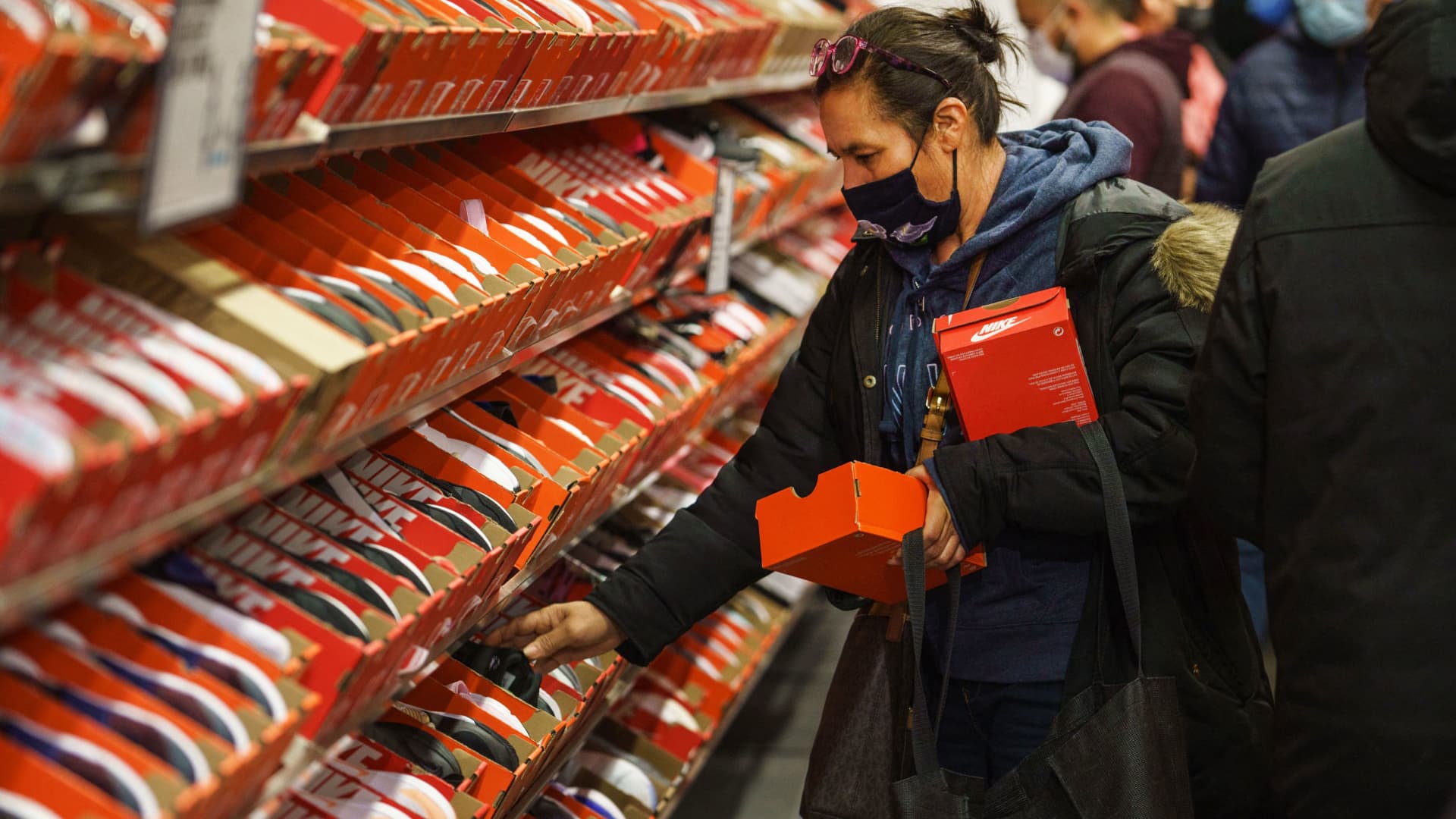
A woman shops for shoes in the Nike Factory Store at the Outlet Shoppes at El Paso, in El Paso, Texas on November 26, 2021.
Paul Ratje | AFP | Getty Images
Nike on Thursday said it had a strong first fiscal quarter despite supply chain issues, as well as declining sales in Greater China, its third biggest market by revenue.
Like other retailers, Nike has been facing supply chain headwinds, such as a rise in both shipping costs and shipping times in recent quarters. The company said its inventory levels swelled during the quarter compared to the year-ago period.
The company’s shares dropped about 5% in after-hours trading.
Here’s how Nike did in its first fiscal quarter compared with what Wall Street was anticipating, based on a survey of analysts by Refinitiv:
- Earnings per share: 93 cents vs. 92 cents expected
- Revenue: $12.69 billion vs. $12.27 billion expected
Nike reported net income for the three-month period ended Aug. 31 fell 22% to $1.5 billion, or 93 cents per share, compared with $1.87 billion, or $1.18 per share, a year earlier.
Revenue during the period was up 4% to $12.7 billion, compared with $12.2 billion a year earlier.
Recently, Nike has been shifting its strategy and looking to sell its sneakers and other merchandise directly to customers and scale back on what is sold by wholesale partners like Foot Locker. The company said on Thursday its direct sales grew by 8% to $5.1 billion, and sales for its digital-brand rose 16%. On the flip side, sales for Nike’s wholesale business sales increased by 1%.
In its first fiscal quarter, Nike said its inventory rose 44% to $9.7 billion on its balance sheet from the same period last year, which the company said was driven by supply chain issues and partially offset by strong consumer demand.
Total sales in Greater China were down 16% to about $1.7 billion, compared with nearly $2 billion a year earlier. The company has faced disruption in its business in the region, where Covid lockdowns have affected its business. Nike had said in the previous quarter it expected issues in Greater China to weigh on its business.
Meanwhile, total sales in North America, Nike’s largest market, increased 13% to $5.5 billion in the first fiscal quarter, compared with roughly $4.9 billion in the same period last year. The sneaker giant has continuously said consumer demand, especially in the U.S. market, hasn’t waned despite inflation.
Read the company’s earnings release here.
This story is developing. Please check back for updates.







